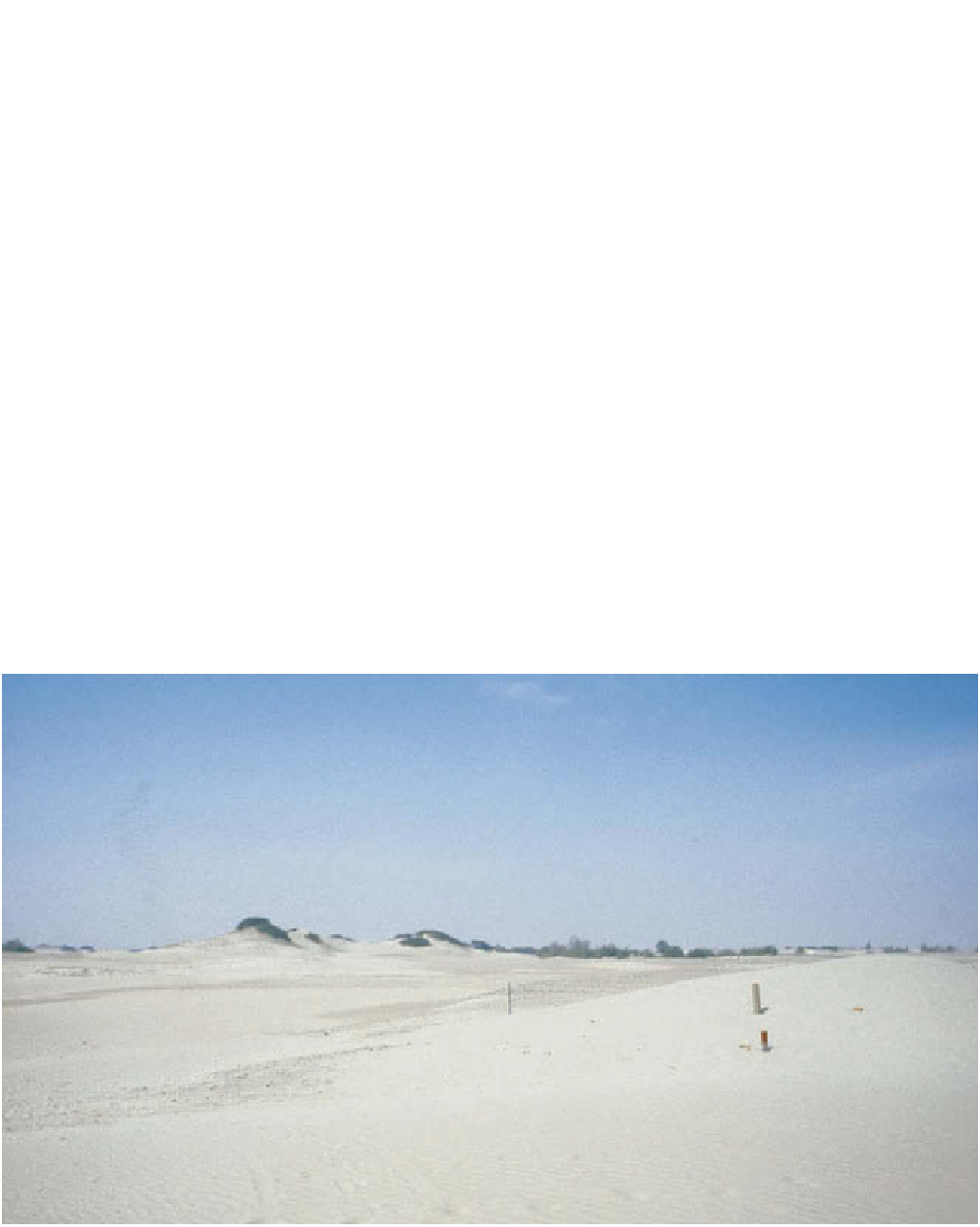Geoscience Reference
In-Depth Information
received more than the mean figure. It has been said that,
for deserts, average rainfall is the total that never falls,
though that is an exaggeration.
In some of the subtropical high-pressure belts
additional factors reduce the likelihood of rain. On the
western coasts of the Sahara, the Kalahari and the Atacama
deserts cold ocean currents flow offshore. They cool the
air and make it even more stable. Mist and fog may be
frequent but rain is rare. One of the driest places in the
world is Quillagua in the Atacama desert of northern
Chile. Years have elapsed between rainstorms and even
then only a few millimetres may fall. It lies in a valley
parallel to the coast and about 80 km inland. The
intervening hills remove any of the fog moisture that
sustains some life along the coast. Conditions here are
similar to those in other coastal deserts near a cold ocean
current but in addition the prevailing winds blow from
the south-east. To reach the Chilean and Peruvian coasts
they must descend the main mountain barrier of the
Andes, some 5,000 m, which further emphasizes stability
and dryness. The result of all these factors acting against
the mechanisms of rainfall generation is to produce one
of the driest parts of the planet (
Plate 26.1
).
Atbara (Sudan), 355m
50
Highest
40
Mean max.
30
20
Mean min.
10
Lowest
0
40
Mean annual
precipitation - 64mm
20
0
J F M A M J J A S O N D
Plate 26.1
Small linear dunes in the Peruvian desert near Ica. Vegetation is minimal in this very arid climate.
Photo: Peter Smithson






































































































